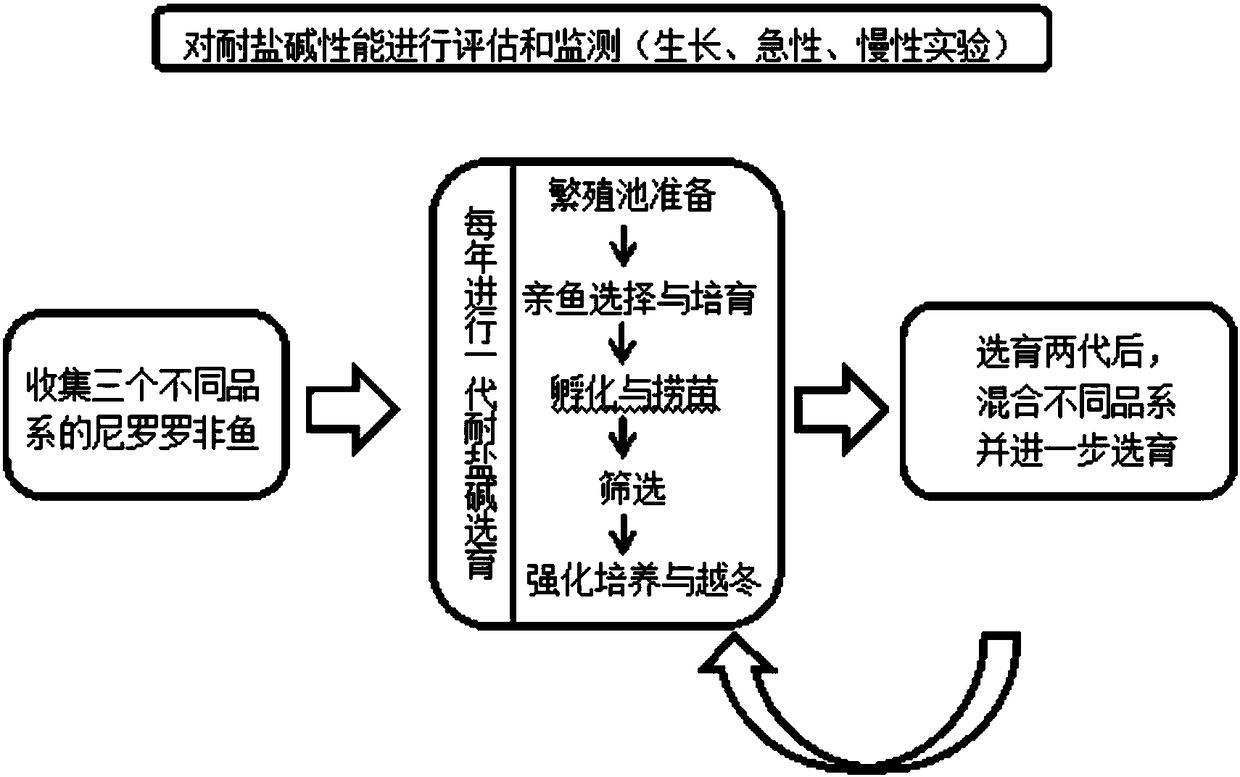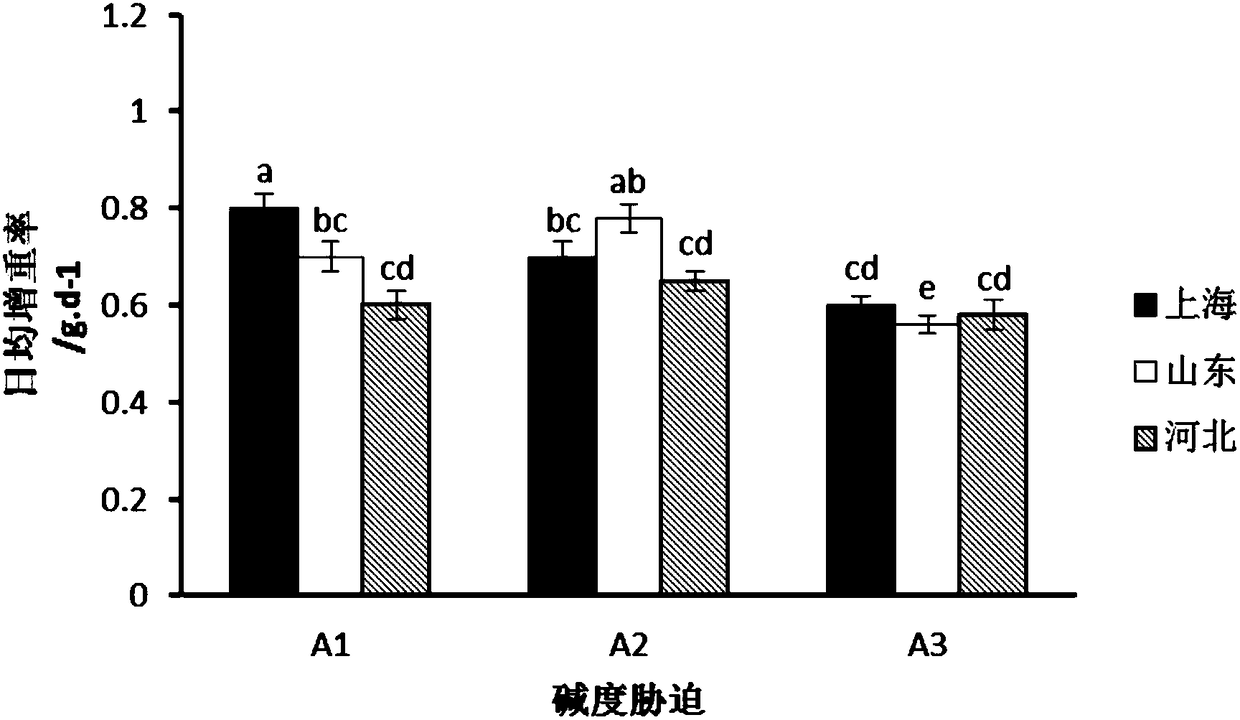Method for selectively breeding excellent strains of saline-alkaline tolerant tilapia
A salt-alkali-resistant and tilapia-resistant technology is applied in fish farming, agricultural fishing, and climate change adaptation. Effects of genetic diversity, broad salt tolerance, avoidance of inbreeding
- Summary
- Abstract
- Description
- Claims
- Application Information
AI Technical Summary
Problems solved by technology
Method used
Image
Examples
Embodiment 1
[0038] Embodiment 1 Salt-alkali tolerance breeding experiment
[0039] as attached figure 1 As shown, the above-mentioned Nile tilapia is selected for a generation of salt-alkali tolerance every year. The specific process is preparation of breeding ponds, selection and cultivation of broodstock, hatching and seedling removal, screening, intensive cultivation and overwintering, specifically:
[0040] The first step, breeding pond preparation: choose a clear pond as the breeding pond, clean and disinfect, then inject new water and prevent wild fish and harmful organisms from entering the pond with the water, and apply fertilizer 7 days before broodstock enter the pond to make the water fertilized , to cultivate bait organisms in the water.
[0041] The second step, broodstock selection and cultivation: select mature broodstock and feed and cultivate them in the above-mentioned prepared breeding pond in mid-March. The water temperature in the pond is controlled above 23°C, and t...
Embodiment 2
[0045] Example 2 Comparison experiment of different strains of Nile tilapia daily weight gain in different saline-alkaline environments
[0046]Three different strains of Nile tilapia juveniles from Shanghai, Shandong and Hebei were selected and cultured in cages under different salinity, alkalinity and saline-alkaline mixed gradients.
[0047] The configuration method of different saline-alkali mixing gradients in the saline-alkali mixing group is as follows: first blend brine and fresh water into different salinities, and then add analytically pure NaHCO in a certain proportion 3 Each saline-alkali gradient was prepared, and the upper layer of clear water was taken out after 2 days of precipitation for testing. Among them, SG7 portable salinity meter and HI83200 multi-parameter water quality analyzer were used to detect salinity and alkalinity respectively.
[0048] The Shanghai strain is in the single salinity 15‰ group and the single salinity 20‰ group; the Shandong strain...
Embodiment 3
[0049] Embodiment 3 evaluates and monitors the saline-alkaline tolerance experiment of different strains of Nile tilapia
[0050] While carrying out salt-alkali tolerance breeding for the above-mentioned Nile tilapia, evaluate and monitor its salt-alkali tolerance, including growth experiments, acute lethal experiments and chronic lethal experiments, specifically:
[0051] The growth experiment was carried out in a cement pool, and five groups were first set up, namely fresh water group, single salinity group (10‰), saline-alkali mixed group (salinity 10‰, alkalinity 2g / L), saline-alkali mixed group (salinity degree 10‰, alkalinity 4g / L) and saline-alkali mixed group (salinity 10‰, alkalinity 6g / L). Before the experiment, mark the left and right pectoral fins of the fish used in the experiment to distinguish the breeding group and the control group. There are 240 fish in each pond, and 120 fish in the breeding group and the control group. The weight, body length and body heigh...
PUM
 Login to View More
Login to View More Abstract
Description
Claims
Application Information
 Login to View More
Login to View More - R&D
- Intellectual Property
- Life Sciences
- Materials
- Tech Scout
- Unparalleled Data Quality
- Higher Quality Content
- 60% Fewer Hallucinations
Browse by: Latest US Patents, China's latest patents, Technical Efficacy Thesaurus, Application Domain, Technology Topic, Popular Technical Reports.
© 2025 PatSnap. All rights reserved.Legal|Privacy policy|Modern Slavery Act Transparency Statement|Sitemap|About US| Contact US: help@patsnap.com



